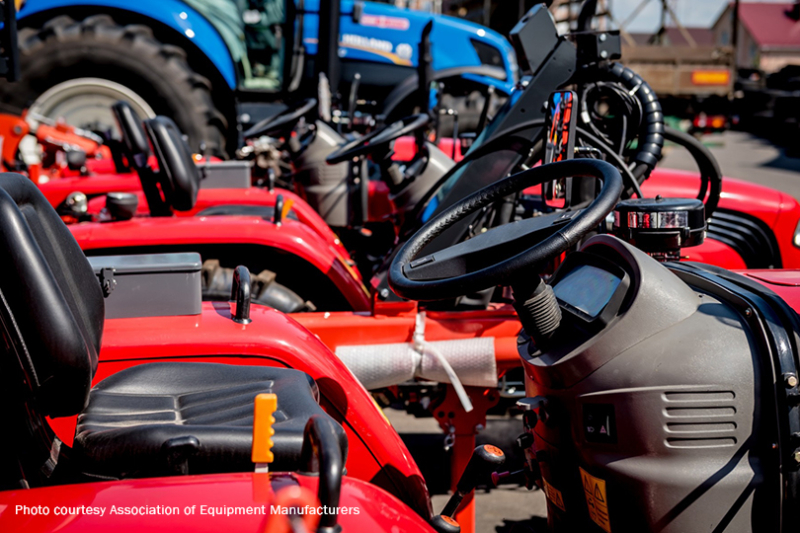By Jennifer Whitlock
Field Editor
In the first quarter of 2021, total farm tractor sales were up more than 50% in the U.S. and nearly 60% in Canada, according to the latest Association of Equipment Manufacturers (AEM) monthly Ag Tractor Combine Report.
And small tractor sales are leading the way.
“For the last 12 months, we’ve seen a dramatic rise in under-40 horsepower, or small tractor sales, in North America, both in the U.S. and Canada,” Curt Blades, AEM senior vice president of Agricultural Services, said. “This is due largely to a lot of the industries that have done very well during the pandemic, like luxury items or things that have to do with the home.”
Suburban and rural homeowners with extra money they may have normally spent on vacations and other activities outside of the home have rechanneled those dollars into purchasing smaller-scale tractors they can use for things like hauling dirt or moving large items and mowing, Blades said. Attachments—such as utility buckets, grapples and forks—make these tractors attractive investments for landowners of larger lots with diverse needs.
“If a homeowner has some acreage, there’s a good chance they’ve got a lot of grass and other things on that acreage,” he said. “We find that having a compact utility tractor just makes their jobs easier, whether that’s hauling rocks or hauling dirt or working around trees or simply doing things to make the land beautiful. We find those under-40 horsepower tractors are an important part of the lifestyle people adopt when they choose to live on those acreages.”
In March 2021, more than 20,000 under-40 horsepower tractors were sold in the U.S, bringing the year-to-date total to 43,726 units.
But larger row-crop and articulated four-wheel drive tractors are seeing increased sales, too. So far this year, 600 four-wheel drive farm tractors and nearly 1,000 combines have been sold in the U.S.
Blades attributes the rise in large equipment sales to an aging North American ag equipment fleet that needs replacing and technological upgrades, an uptick in commodity prices and easing of trade tensions.
“We’ve been seeing the average age of equipment kind of creep up there just a little bit. Some of that has to do with that over the last five years, we’ve had some uncertainty in the agricultural economy in general,” he said. “[But now] we’re seeing an increase in commodity prices. We’re seeing some of the uncertainty of trade wane, and we’re seeing some relief in biofuels. In general, optimism in farm country is stronger than it has been in a very long time. As a result, people are willing to invest a little more in their farming operations, and we’re seeing that reflected in capital equipment.”
That translates to not only fleet replacement markets, but fleet updates and additional demand for newer equipment not seen in several years to take advantage of technology like precision agriculture. Blades pointed to fuel efficiency as another factor in deciding to upgrade or replace aging equipment, noting some new models are about 20% more fuel-efficient than older models.
In North America, Blades noted one market usually leads the other in terms of equipment sales. Sometimes Canadian sales are an early indicator of the U.S. market, and sometimes the reverse happens. Currently, he said the U.S. is leading Canada by about six months, but both markets are very strong.
Because of the large number of sales, equipment inventories are down.
Increased demand and a tightened supply chain mean it may take several months for delivery on equipment purchased today, Blades said.
He urged farmers and ranchers considering an ag equipment purchase to talk with a local dealership sooner rather than later due to the extended wait times.
“We’re operating in a very interesting market right now. If you would have asked me last year if we would be staring at record high tractor sales and record high combine sales and commodity prices, I wouldn’t have believed that we would be where we are right now,” Blades said. “What we’re recognizing during the pandemic is how important the food supply is, and that’s created a lot of optimism out there in rural areas. Couple that with the attention that’s being paid to the farm community as part of the environmental solutions, I think you’re seeing a lot of optimism out there.”

